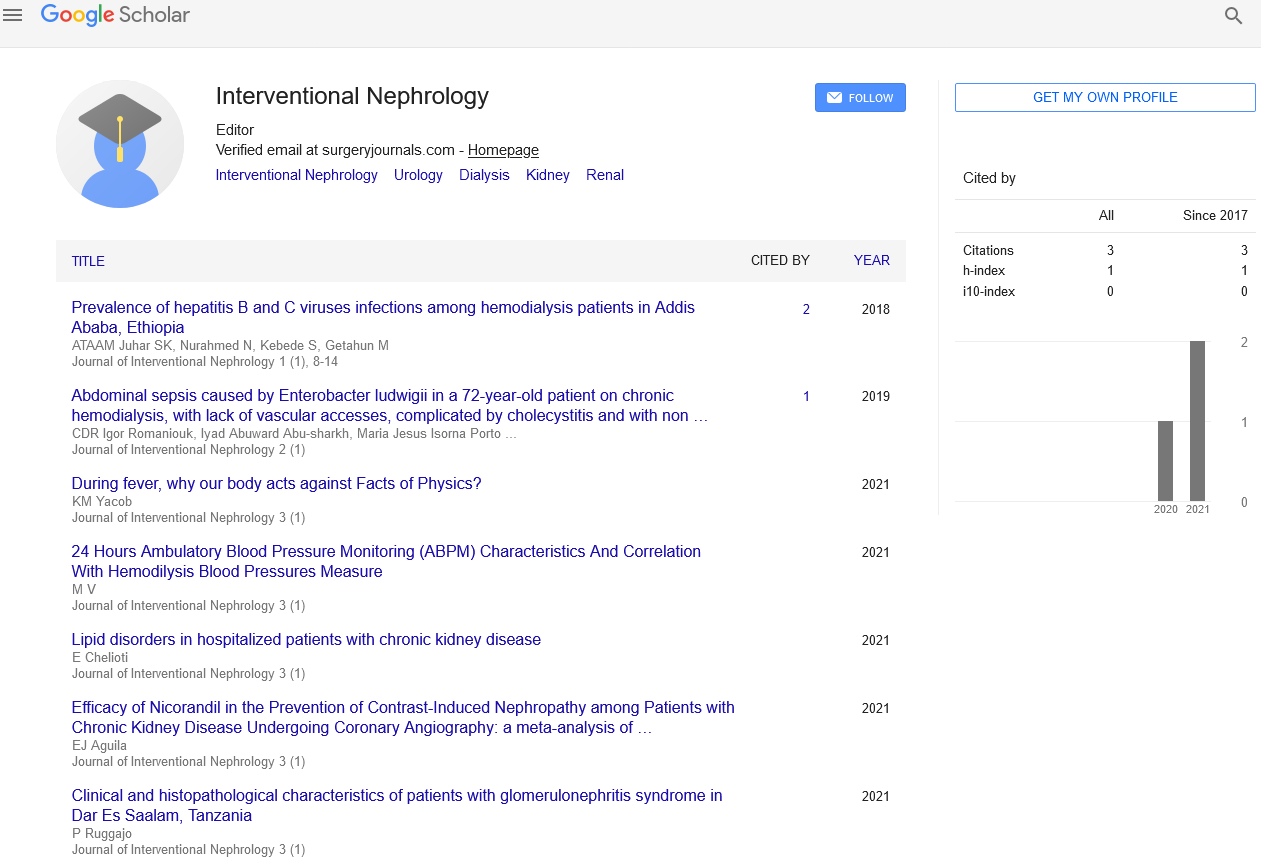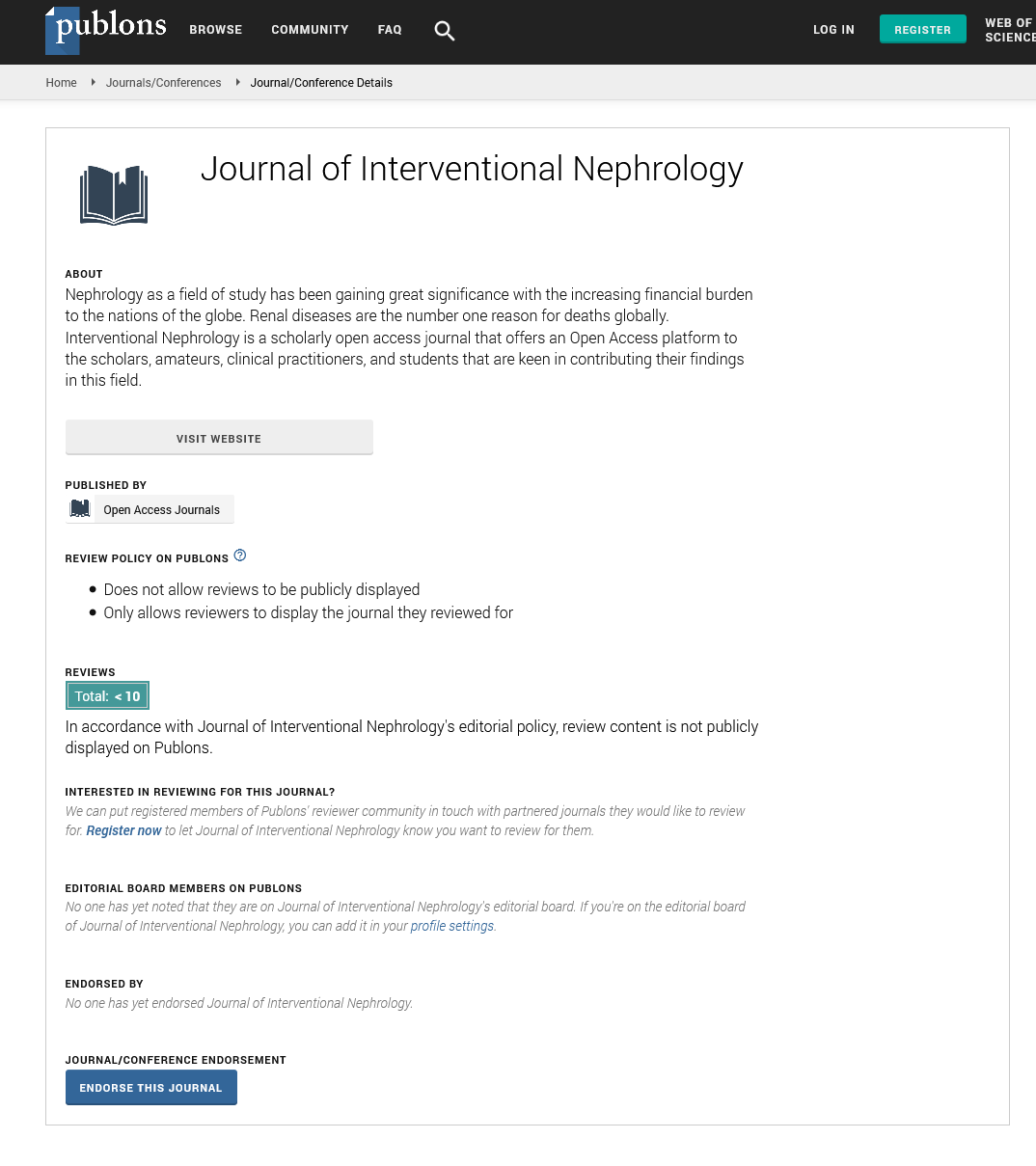Perspective - Journal of Interventional Nephrology (2024) Volume 7, Issue 4
Innovative Techniques in Renal Biopsy
- Corresponding Author:
- Xiaotong Zhang
Department of Nephrology, MVN University, Italy
E-mail: XiaotongZhang444@es.edu
Received: 29-Jul-2024, Manuscript No. OAIN-24-143636; Editor assigned: 31-Jul-2024, PreQC No. OAIN-24-143636 (PQ); Reviewed: 13-Aug-2024, QC No. OAIN-24-143636; Revised: 20-Aug-2024, Manuscript No. OAIN-24-143636 (R); Published: 30-Aug-2024, DOI: 10.47532/oain.2024.7(4).300-301
Introduction
Renal biopsy is a pivotal diagnostic tool in nephrology, essential for evaluating glomerular diseases, assessing transplant rejection, and guiding therapeutic decisions. As the field of nephrology evolves, so too do the techniques for renal biopsy, incorporating advanced technologies and methodologies that enhance accuracy, safety, and patient comfort. This article explores recent innovations in renal biopsy techniques, examining their impact on diagnostic precision and patient outcomes.
Description
Traditional renal biopsy techniques
Historically, renal biopsy has been performed using either percutaneous or open surgical approaches. Percutaneous renal biopsy, guided by ultrasound or fluoroscopy, remains the most common method due to its minimally invasive nature. Despite its advantages, traditional techniques are not without limitations, including potential complications such as bleeding, infection, and discomfort.
Advancements in image-guided biopsy techniques
• Ultrasound-guided biopsy: Ultrasound
remains the primary imaging modality
for guiding renal biopsies, offering real-time
visualization of renal anatomy and
needle placement. Recent advancements
include high-resolution ultrasound and
contrast-enhanced ultrasound, which
improve visualization of renal lesions and
surrounding structures, reducing the risk
of complications.
• Computed Tomography (CT)-guided
biopsy: CT imaging enhances precision
by providing detailed cross-sectional views
of the kidney. Innovations in CT-guided
biopsy include the use of stereotactic
techniques and robotic-assisted systems,
which improve targeting accuracy and
reduce procedural time.
• Magnetic Resonance Imaging (MRI) guided biopsy: MRI offers superior soft
tissue contrast and spatial resolution.
Techniques such as MRI-guided biopsy
use real-time imaging to precisely localize
renal lesions and guide needle insertion,
particularly in cases where ultrasound or
CT imaging may be less effective.
Advanced biopsy devices and techniques
• Automated biopsy devices: Automated core
needle biopsy devices have revolutionized
renal biopsy by offering precise control over
needle placement and sample acquisition.
These devices minimize operator variability
and improve sample quality, reducing the
likelihood of repeat procedures.
• Endoscopic biopsy: Flexible endoscopic
techniques, including ureteroscopic biopsy,
allow for direct visualization and biopsy of
renal masses or lesions within the collecting
system. These approaches are particularly
useful for accessing difficult-to-reach areas
and providing high-resolution images of
renal pathology.
• Cryoablation and radiofrequency ablation: While not biopsy techniques per se,
cryoablation and radiofrequency ablation
can be used in conjunction with biopsy
to treat renal tumors or masses. These
minimally invasive procedures use extreme
temperatures or radiofrequency energy to
destroy abnormal tissue, often guided by
imaging techniques.
Biopsy techniques for specific indications
• Transjugular renal biopsy: For patients
with severe bleeding risks or difficult
anatomical access, transjugular renal biopsy offers a safer alternative. This technique
involves accessing the renal veins via the
jugular vein, reducing the risk of bleeding
complications associated with percutaneous
approaches.
• Fine Needle Aspiration (FNA): FNA is a
less invasive technique that can be used for
obtaining cytological samples from renal
masses. Although less commonly used for
glomerular diseases, FNA provides a less
traumatic alternative for certain diagnostic
indications.
Patient-centric innovations
• Pain management and sedation: Innovations
in local anesthesia and sedation techniques
improve patient comfort during renal
biopsy. Ultrasound-guided nerve blocks and
conscious sedation offer effective pain control
while minimizing systemic side effects.
• Minimizing post-procedure discomfort: Advances in procedural techniques and post-biopsy
care, such as the use of absorbable
sutures and expedited recovery protocols,
enhance patient comfort and reduce hospital
stay durations.
Future directions
The future of renal biopsy is likely to be shaped by emerging technologies and multidisciplinary approaches. Integration of Artificial Intelligence (AI) and machine learning into imaging analysis could further refine biopsy accuracy and predict procedural outcomes. Additionally, ongoing research into non-invasive biomarkers and liquid biopsy techniques may eventually provide alternative methods for renal disease diagnosis and monitoring.
Conclusion
Innovative techniques in renal biopsy have significantly advanced the field, offering improved accuracy, safety, and patient comfort. From enhanced imaging modalities to automated biopsy devices and patient-centric innovations, these advancements reflect the ongoing evolution in nephrology practice. By embracing these innovations, nephrologists can enhance diagnostic capabilities, reduce complications, and ultimately improve patient outcomes.
In summary, the integration of cutting-edge technologies and methodologies in renal biopsy underscores a commitment to advancing renal care through precision medicine and personalized approaches, paving the way for future innovations in the field.


